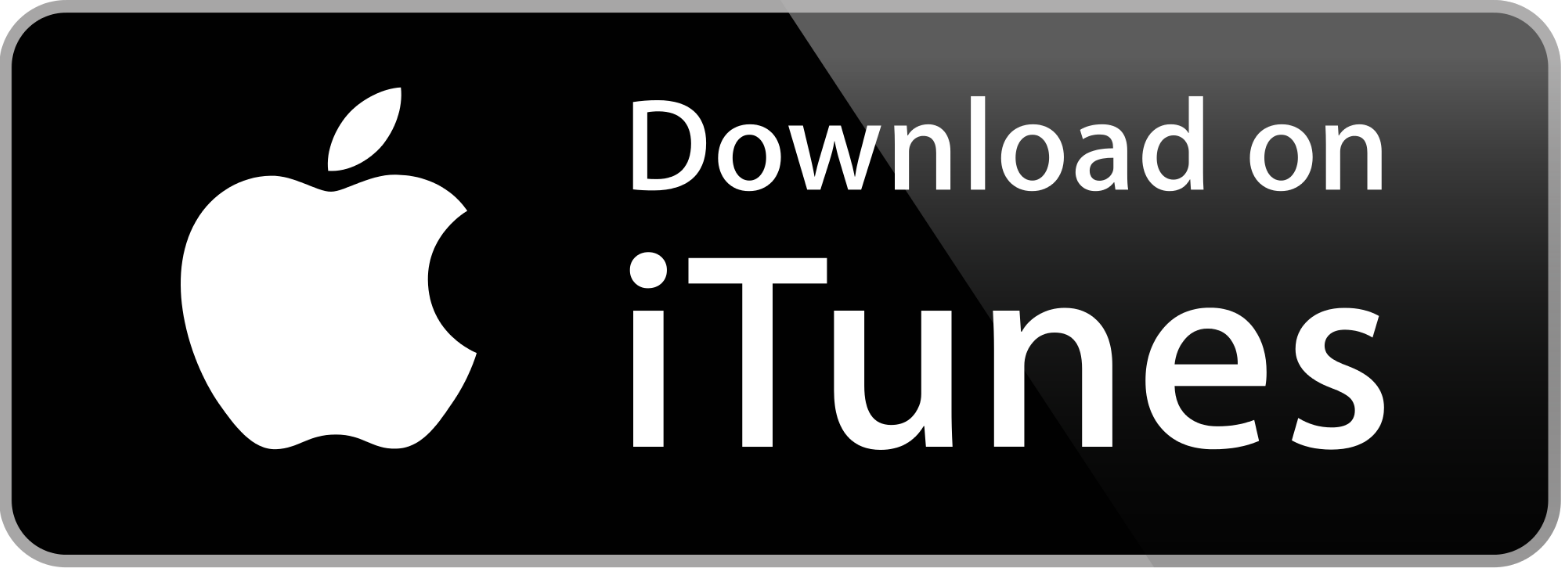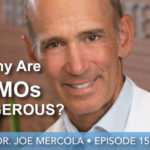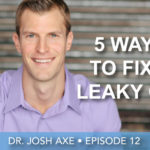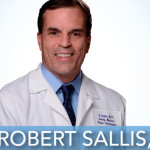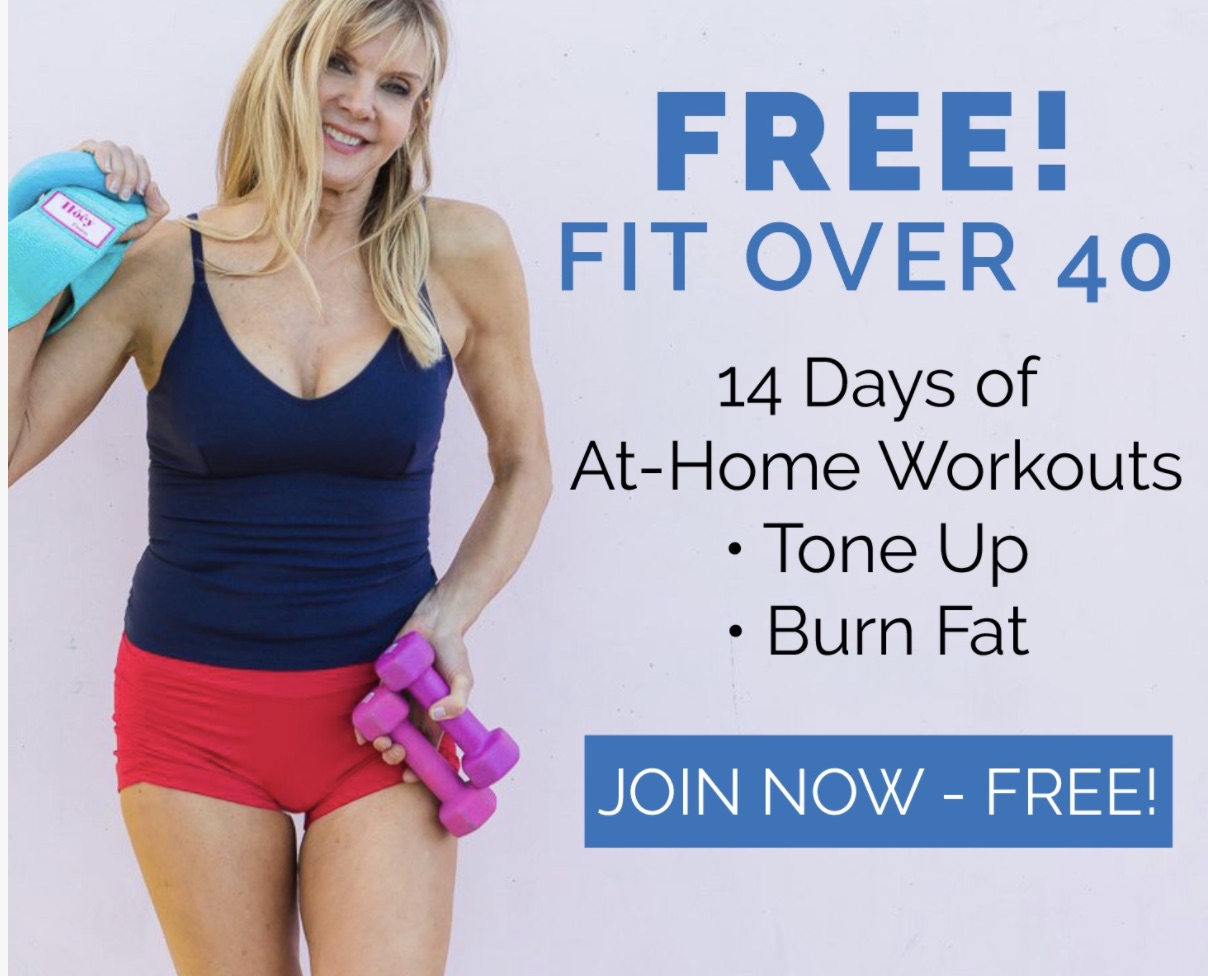Episode 28 | Dr. Joe Tatta, DPT | Heal Pain Now!
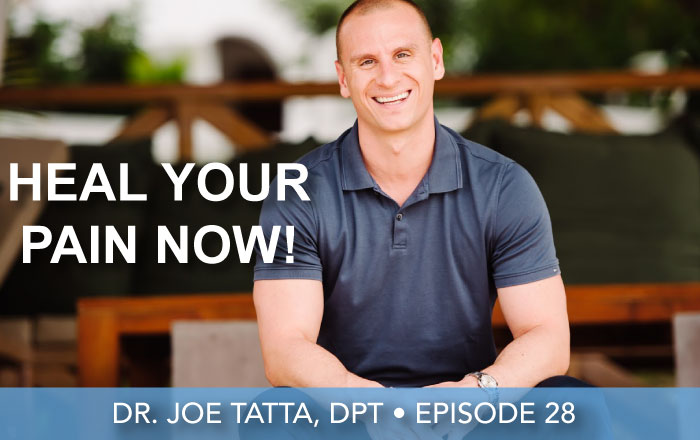
CLICK PLAY!
FAMILIAR WITH PODCASTS? LISTEN ON iTUNES!
Follow Along With The Highlights
Kathy Smith: Tell me what prompted you to get involved with pain management?
Joe Tatta: Well, I always knew I–my story actually goes quite a ways back to when I was kid. My mom was a nurse, and she used to work the evenings in the adolescent cancer and medicine floor of the hospital. So, during the day she would take care of me and my brother and my dad and the house and the dog and do all the things that working moms do. It’s funny because this was in the 80’s and 90’s when she took this job and I actually remember her doing some of your tapes because my mother was an avid exercise–she’s always been very much into exercise. She really had it all together.
But she worked the evening shift which was tough work because, obviously, your sleep pattern is completely disrupted. Plus, she was working under stressful conditions. A lot of the kids, who had cancer, were up all night with illness and nausea and being ill. She did it for a number of years and she loved it, but she just kind of burned out from it. So, I watched her go from someone who kind of had it all together as many women do. They’re juggling many things – house, career and all the things that go along with that to someone who–you know, she was–as your caller mentioned, she was fatigued. She had digestive issues. She had some chronic back and neck pain. She kind of bounced between anxiety and depression.
So I watched her say, “Ok, I can’t do this job anymore. It’s just too much.” And she obviously quit and she went back to school. She stayed in the nursing profession, but she got into a different field of nursing. And I watched her heal herself naturally. So, I watched her use exercise, nutrition. I watched her work on her stress levels. I watched her really change her life and take out the things that were not good for her and figure out what was good for her. And just from watching her inspired me of course – being a nurse, I’ve watched her help many people especially kids with cancer. But, also, watching her go through her own transformation.
So, that was really the first kind of stake in the ground as far as me saying, “You know, I really would like to help people.” And, then, as a kid I was a competitive gymnast. So, I had my own injuries and tears and sprains and strains, and physical therapy was kind of perfect blend of healthcare and a way to help people. And that’s what I’ve been pursuing for the past 25 years.
Kathy Smith: Great story. And not to digress, but somewhat similar situation for me. It’s interesting when people ask why and how I got into this fitness field and started creating those tapes that your mother used. One of the things that I talk about is that everybody thinks it’s about thinner thighs, tighter tummy and, yet, when I got into the field and I started teaching, what motivated me were the type of stories that you just talked about.
There were women that were doing so much. They were trying to juggle so many things and trying to–and to the course of it, they were feeling anxious and depressed and losing confidence. What I would find, I would get letter after letter. This was before emails, so letter–and Facebook–and letters, literally things that would come in the mail. I was doing a TV show at the time and we would get hundreds of thousands of letters and, yeah, there was always the letter like, “Oh, my God, I’m in great shape. I look great in a bikini.”
But more often than not, it was the story about a transformation that happened where they’d gain control of their life because of dealing with stress and anxiety. So, anyway, I appreciate the story.
But let’s switch gears back into pain. Let’s just get to the nitty gritty. What is pain? What is the body saying to us when we experience pain?
Joe Tatta: So, pain is an alarm. Pain is about protection. And if there’s one thing that people can take away is just that one statement, that pain is about protection. Now, we have to kind of break pain down into two different groups.
So, one, there’s acute pain. And that’s the pain you get if you fall and scrape your knee or you sprain your ankle or you break a bone. And with acute pain, your body has a natural ability to heal itself. It’s called the inflammatory process. And inflammation is there for a reason. It’s meant to heal tissue, so some inflammation at the right time is actually a very, very wonderful thing. And it heals any kind of injury you have. So, if you break a bone or you sprain an ankle, that tissue will be healed within three months no matter what.
With chronic pain–the definition of chronic pain is pain that persists beyond a three-month period of time. So, for some reason, that pain is persistent beyond the normal stage of tissue healing. So, that’s what pain is and that’s what chronic pain is as a way to set up a simple framework between the two.
Kathy Smith: So, typically, I know in our nation right now, when you hear about chronic pain, a typical prescription would be take some pain medication, take some opioids. And I know that this has become epidemic in the country. So, tell me your thoughts on where we are with pain management in our country.
Joe Tatta: Yeah, it’s a wonderful question, Kathy. We have, in the United States of America–and some of the numbers that I’ll state here are kind of consistent worldwide actually. We have about 100 million people in the United States who suffer with a chronic pain-type syndrome. The United States of America has about 350 million total, so one out of every three Americans struggle with chronic pain in some form.
Traditionally, our healthcare system has treated either by prescribing a medication. Those have been opioids, which we now have an opioid epidemic, where about each year we have about 20,000 people that die from an opioid overdose. And we have many, many more that are addicted or dependent on these medications.
Beyond the medications, we’ve also looked at pain as far as treating it with surgical procedures and fancy diagnostics and imaging and things like that. And some of those things have their place. Typically, as I spoke, before when you have acute pain, those things can be lifesaving and really help you. However, we know with chronic pain that those things don’t work very well and for the most part, they don’t work at all. The National Institute of Health as well as the CDC backed this up probably about nine months ago.
So, we’re just now really starting to unravel, ok, if those things don’t work, what really does work for people with chronic pain? So, we’re moving from what is called a biomedical model. So, the biomedical model is when you go to the doctor, the doctor gives you a prescription for an opioid and kind of sends you on your way. You see what’s called a bio-psycho-social model. So, that’s ok. Let’s look at the natural ways that we have to heal and cure your chronic pain without prescribing a medication as the first line of treatment.
Kathy Smith: It makes sense to me, because I’ve seen the cycle work. But for the person who’s in pain–you know I want to get into what the bio-psycho-social model is–
Joe Tatta: Yeah.
Kathy Smith: –and what that represents. But I have a feeling that somebody steps into an office or gets out of bed in the morning–let’s just say gets out of the bed in the morning, and they hurt. They’re in pain and they hurt bad. This isn’t like a little pain, and it seems like it’s much easier to go for, “Let me take something, get a glass of water and take something that will kill that, disrupt that pain pattern.” So, how do you mentally–before we go into what you need to do, how do you mentally shift your mindset so you’re even open to another model?
Joe Tatta: Well, it’s an interesting question that you’ve posed because, obviously, these are patients that have had pain for many years and they tried many, many types of things, seen many types of physicians. So, the first thing we actually do is we start to really just explain to people what pain is and what pain isn’t.
One of the ways we do that is just through education. So, someone listening to a podcast like this and gathering information about what pain is and what pain isn’t–because right now when people have pain, they think, “If I have pain, I must be damaging myself; therefore, I shouldn’t move.” And the truth is with chronic pain, it becomes less about the tissues and more about what’s called an overly sensitive nervous system.
So, for some reason, your brain is stuck in what’s called that harm/alarm phase. And once people start to make that connection, they say, ‘Oh, ok. So the pain I feel in my knee doesn’t necessarily mean I’m harming anything inside my knee, that for some reason my brain and my nervous system is stuck in this kind of persistent state.” Then they start to–what happens is their fear starts to slowly decrease. And when fear starts to decrease, that pain starts to decrease almost automatically.
Once the fear goes away, then people say, “Well, ok so, if it’s not about my knee per se, then that must mean I can go out for a basic walk today and I can give that a shot,” or “I can do a basic exercise video,” or “Maybe I should sign up for that gentle yoga class or see the physical therapist.”
The other thing we start to educate people on are their actual thoughts. When we look at thoughts, there’s something called pain catastrophizing. That’s a big fancy word, but these are the thoughts that are in our mind all throughout the day when you have chronic pain, and those are the thoughts of, “This pain is going to be the death of me,” or “I’m always going to have this pain,” or “The pain gets in the way of every single thing that I do,” or “I can’t find any solution for my pain. I’m always going to carry this pain with me.” When patients have those type of thoughts, not only does it make pain worse as far as the intensity but also makes pain persist for a longer period of time.
So, we slowly just, through some awareness exercises, we say, “Ok, pause through the middle of your day and take note of your thoughts. And, then, start to reframe some of those thoughts and say, ‘Ok, well, I know I have a little bit of pain. But even though I have pain today, I was still able to walk a mile,’ or ‘Even though I have pain today, I’m starting to work in some new anti-inflammatory recipes that are going to help with my pain,’ or ‘Even though I have pain today, I am starting to learn–I listened to this great podcast that Kathy Smith put out and I’m learning a lot and I’m going to start to implement these things in my life.'”
So, a lot of it’s about decreasing fear and the anxiety that comes along with it. And once that happens, people start to take the little baby steps that they need to start to get on that transformation toward really solving the pain that they’ve had for many years.
Kathy Smith: So, breaking the cycle and when it comes to movement, I’ve seen it over and over again where people say, “Oh, I can’t do that.” They’ll have some kind of pain in their body and, then, they’ll turn off to any form of movement and they start to limit their motion, which we know goes along with that – a lot of other health issues that start to happen then–
Joe Tatta: Yeah.
Kathy Smith: –including what? Heart disease, diabetes, weight gain, all the things that happen when you don’t move. So, the idea that movement can make you feel better and distinguishing–obviously, I also just probably want to clarify or qualify that certain pain – and especially when you’re working out, you do have to listen to. So, if I’m doing lunges or I’m doing squats with a big heavy weight over my head and my knees are hurting – there’s a sharp pain – that is a signal to your body, it’s time to stop.
I think that’s the thing that we have to distinguish between what are things that are just more acute that you’re talking about like, “Oh, this is not good.” I know I’ve done things at the gym. I go, “Oh, that’s not good for my body.” But, then, there’s other things, like I have a neck–my whole Achilles heel is my neck and shoulders and that’s where I kind of hold my pain. And I know when it’s triggered that there’s something going on in my life typically, and it’s typically stress related. So, let’s talk about the stress/pain connection here.
Joe Tatta: Yeah, and let me give your listeners some tips around kind of that movement part, because it is so important. First one that comes–when you start any exercise program, it’s normal to have a little bit of soreness. Most of that is muscle soreness because you’re moving muscles again or they’re joints that maybe talking to a little bit because you haven’t moved them in a long time. So, what I tell people is obviously, you want to pace it, don’t race it. So, you take things nice and steady. Just know that a little bit of soreness is ok. You can be sore but still be safe. Ultimately what we’re trying to message–both you and I, Kathy, are spreading is that movement is medicine and motion can be lotion for your joints. Motion lubricates your joints. It gets your blood flowing.
Kathy Smith: I love that. I love that. Motion is lotion for your joints. Oh, I’m going to use that. That’s so good.
Joe Tatta:Yeah, and I use a lot of metaphors with people because some of the metaphors–let’s tie this into stress now. Those thoughts that many of us hold onto–or we’ve been told–for instance, the older you get, the more pain you’re going to be in or the older you get, the stiffer you’ll get. The truth is that’s not true if you’re leading a healthy lifestyle and you’re working on your tissues and you’re working on other aspects of your life. You can go into your 90s and 100 and not have any pain at all.
As far as stress goes, stress kind of turns on that nervous system, so it makes your nervous system hypervigilant. So, if you go back to exercising too much too fast, your nervous system is going to say, “Whoa. We’re doing way too much here. Yesterday, I sat in a chair for eight hours and today you have me riding the bike for 40 minutes. That’s way too much.” So, like I said before, you have to kind of pace it and not race it. You have to kind of get back to your movement, back to your exercise in a slow, progressive manner.
Stress is really interesting because stress does a lot of different things to the body. I mentioned before those metaphors, so I’ve been trying to insert healing metaphors – obviously, motion is lotion, movement is medicine – and trying to move people away from the negative metaphors that turn on that stress response or turn on fear in people. One of those–when we start to talk about X-rays and images, if we take an X-ray of most of our joints whether you’re 20 or whether you’re 80, you’re going to show a little bit of what’s called degeneration in your joints. Now, most people would say, “Oh, that’s wear and tear.” And wear and tear sounds like a negative thing to my mind. It sounds like I’m wearing my joints out.
Kathy, you and I both know the human body is a wonderful thing. It has an incredible ability to heal as well as an incredible ability to move throughout your entire life. And I tell people that we’re kind of like trees in the sense that your joints, if you look at them on X-ray, they may not look perfect. But that doesn’t mean that your wearing yourself down, and your limbs – your arms and legs are like limbs of a tree in the sense that not all of them grow the same and one limb may be a little bit gnarly looking and the other limb may be perfect. But you can still move forward and you can live a healthy life just with a little bit of healthy movement.
Kathy Smith: And I think coupled with that, what I’ve found for myself and I just want to get your feedback on this. I have a morning ritual and part of my morning ritual is a meditation/awareness process. You mentioned how important this is, but the older I get, the more important it’s becoming. So, I’ve been doing it for so, so many years now. But I really see that idea of being able to clear the mind with what you say these pre-conceived ideas that we have, and unless you start to control those thoughts a bit and shift them to a more positive model, it impacts everything you do throughout the day.
So, my thing is getting up in the morning and going to a breathing meditation. And in that breath, I am actually consciously telling myself as I see my thoughts running away, it’s like I get into the breath. I inhale and I exhale, and I just get very present on breath coming in, breath coming out. As you start to practice something as simple as that throughout the day, I can switch my responses to things. I’m assuming this is probably a pattern that works well when you’re dealing with pain.
Joe Tatta: That’s right. What works well for pain is a few really simple strategies multiple times throughout the day. I love what you’re saying, Kathy. Because, oftentimes, when people have the worst pain, they don’t want to move. They say, “Moving hurts. I’m not moving at all.” So, I say, “Ok, let’s start moving with the breath first.” When you use your breath, it decreases that stress response, which decreases cortisol which is an inflammatory chemical. It makes muscles relax. It regulates your blood flow. It evens out your thoughts. So, oftentimes, if someone’s not ready for a 10-minute meditation, I’ll tell them, “Ok, let’s just focus on the breath for a couple of cycles.” Once you focus on the breath, you can also focus on a one word maccha. So, that can be peace or health or vitality or anything that fits for you in your life.
If you do that–typically, I have patients do it three times a day–you start to bring your nervous system back to a steady state versus this very chaotic, hypervigilant state we’re in all day. Even with exercise–I have patients who come to me who are athletes and they have chronic pain, and they’re doing high-intensity interval training. I’m like, “Well, that’s great. Twice a week of that’s probably enough. But the rest of the time, let’s do some kind of movement or some kind of practice that brings your entire nervous system down.”
Because so often, many of us, we’re so up all day long that your nervous system has two parts to it, and you kind of have to find–there’s a dance there that happens and you’re responsible for that dance in your own body where there are times where you want your heart rate elevated and you want your nervous system to kind of be a little bit on alert. And, then, there are times where you as an individual in charge of your body should say, “Ok, let me work on bringing my nervous system down today. Let me work on relaxation. Let me work on my thoughts. All those things are perfect when it comes to people who have chronic pain.
Kathy Smith: So, does diet have an impact on the whole pain cycle?
Joe Tatta: It does. What’s interesting about chronic pain is that there’s kind of a dance going on between your nervous system and your immune system. Both of them are kind of in a hypervigilant or chaotic state. Now, we know when it comes to the immune system, 70% of your immune system actually lives in your gut. So, if you want to tap into that immune system and make sure it’s regulated and doing what it should, the easiest way to do that is to look at your diet, look at nutrition and to look at the health of your gut.
There are foods that are inflammatory that will make that immune system kind of go haywire and there are foods that are anti-inflammatory which will help regulate that immune system. If you’re eating inflammatory foods, not only could you have inflammation that’s ravaging throughout your body but you could also have autoimmunity.
So, for those that have a pre-genetic disposition, a poor diet can turn on that autoimmunity. If you don’t have that pre-genetic disposition to have autoimmunity, then you could just have chronic inflammation. So, diet is extremely important. So many people still are on the SAD diet – the standard American diet – which is full of, basically, sugar, inflammatory oils, things like GMOs or foods that we’re still kind of toying with them in the laboratory and we’re not quite sure what they do to our bodies. So, nutrition is often the first place that I go especially if someone is struggling with any kind of autoimmune disease.
Kathy Smith: When you say, you’re genetically pre-disposed, is there a test, or how do we find out if we’re genetically pre-disposed and an autoimmune problem?
Joe Tatta: Well, you can have an autoimmune antibody test done. That will tell you if you kind of have high levels to certain antibodies or certain autoimmune diseases. We still don’t have a lot of specific tests for the genetic markers. We’re still working on those specifically. For something like celiac disease, we have a test. Celiac disease is an autoimmune disease of your small intestine. We have a test for that. But we still don’t know exactly what the genes are and, oftentimes, there’s often more than one gene.
So, the take home message really is to figure out what are the things in your life that are inflammatory – many of them we’ve talked about today – and try to decrease them as much as possible.
Kathy Smith: I’ll tell you what I do, and I did it this year. Every January, I do my sugar detox because I tend to be a sugar junkie – more chocolates. And, yet, I notice as I go through the course of the year, as I start to incorporate more sugar in my diet, I start to notice it in my joints. I’ll have my one joint that tells me right away. It’s a wrist joint, and as soon as I start to feel a little inflammation there, I go, “Oh, my gosh. Ok.” And, then, I go back and I backtrack. I say, ok, this week whether it’s sugar from wine, sugar from chocolate, sugar from something – a refined carbohydrate – and I’ll notice immediately the correlation.
Well, I shouldn’t say immediately. That’s what’s interesting about diet. With one of the things I’ve found is that if I’m under stress–like, if I’m playing on the beach in Hawaii and sitting down for a glass of wine, whatever, I don’t have the same response. If I’m under a lot of stress, on planes traveling, go to chocolate, go to sugar, I’ll start to feel a soreness in my joints.
Joe Tatta: Yeah, in my book coming out called Heal Your Pain Now, I talk about five foods that are inflammatory. If most people pull these five foods out for about three weeks, they’ll notice a difference very, very rapidly. You’ve talked about one already. That’s sugar. The second top food would be gluten. After that it would be dairy. So, if you can pull those three foods out right there for three weeks and see how you feel, oftentimes, you notice a dramatic decrease in–the pain’s gone but, obviously, everyone says, “Oh, my pain is five out of ten.” Oftentimes, your pain will drop five pain points on that scale by pulling out just those three foods. The interesting thing is that if you put those three foods back in, like you say Kathy, many of us have that one joint that is kind of like our little red light bleeping that up. “I got too much sugar in my diet. I put gluten back in and, obviously, I have a gluten sensitivity or dairy seems to be inflammatory for me.”
It’s really interesting how our body talks to us. And it’s just a matter of being mindful and just listening to your body and figuring out what it needs. Because each of us have our own little signals like that. Some people do fine with eggs and other people find eggs to be very inflammatory especially those with an autoimmune condition. So, it’s just–part of what I do in my book and my work is I teach people how they can notice these little signals in their life about pain and how they can kind of turn down that pain response.
Kathy Smith: Well, I like the way that you’ve phrased that – your body talking to you. Even with pain, I think it’s such a positive message that your body’s telling you things. And if you listen and you tune in, then you can really transform the way you live your life. So, instead of it being a negative thing and I have to mask it, “Oh I have a pain. Let me take an aspirin.” It’s like, “Oh, I have a pain. Let me look at my diet,” or “Let me look at more movement,” or “Maybe I need to quit this job that’s causing me to be in pain all the time.” It’s listening. What you’re kind of saying and I love that line – listen to the body. Even when it’s got pain just to sit back and say, “Ok, what is it trying to tell me?”
Joe Tatta: That’s right. The body keeps the score. So, even if you have a perfect diet–let’s say your diets perfect but you still have chronic pain, then it may be telling you, “Ok, it’s not what I’m eating so where else could this be coming from? Could it be coming from–I live a sedentary life, let’s say – that I don’t move, I have a desk job, I still have yet to incorporate exercise into my life. Is it that I have an incredible amount of stress?”
Like you mentioned, the stress of our work life at times can be enough to cause pain. “Is it a past emotion that I haven’t dealt with? Maybe there’s something from my childhood.” When we look at women who have fibromyalgia, oftentimes they have some kind of trauma in their childhood whether that’s an emotional trauma or a physical or sexual trauma that still needs to be worked through. So, like I said, the body keeps the score and it’s just a matter of figuring out, ok, what’s the perfect–what’s my kind of pain program? What’s my secret sauce that I need in my life to help turn down this pain response?
Kathy Smith: Ok, well, the secret sauce for everybody out there might be just picking up Dr. Joe’s new book, which is called Heal Your Pain. It’s available now. It’s on Amazon. I just want to thank you, Joe, for being here and sharing all your wisdom. I also want to encourage listeners, there’s a great two-minute pain quiz that I took, and it’s on a site called ThePainQuiz.com. So, check it out. It’ll help you learn more about this important topic. I really encourage you to share it with your friends. So, take the quiz. Pick up the book and share it with your friends, because this is a problem that so many people suffer from and, then, so many times, they suffer alone.
That’s what I love about you, Joe, that you’re shining a light on something that we should bring to the forefront and so that it becomes–we discuss it at the family dinner, let’s say or the family reunions. It’s just something we talk about and it’s not like let’s go pop a pill and keep our arthritic–a chronic pain just to ourselves.
Joe Tatta: Yeah, that’s true. A lot of what–we’re starting new conversation around pain, and the new conversation is, “Thank you for the medication you’re offering me, but can you offer me a natural solution?” And together with people like you, Kathy, we can really spread this message and we can reverse our chronic pain epidemic and we can make people feel a lot better and really enjoy the life that they have.
Kathy Smith: Ok, well, I’ve enjoyed talking to you and I could do it for hours, but we’ve got to wrap up. So, thank you again for being on the show. I look forward to more discussions with you over the year.

